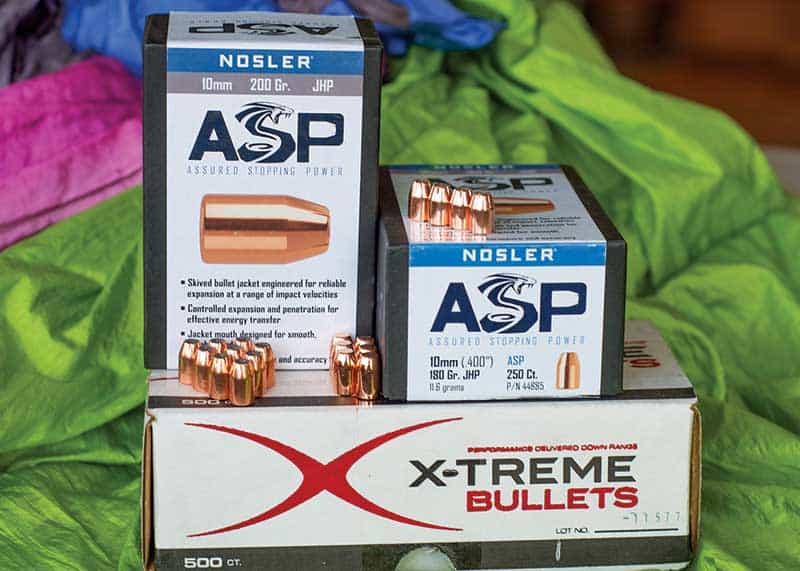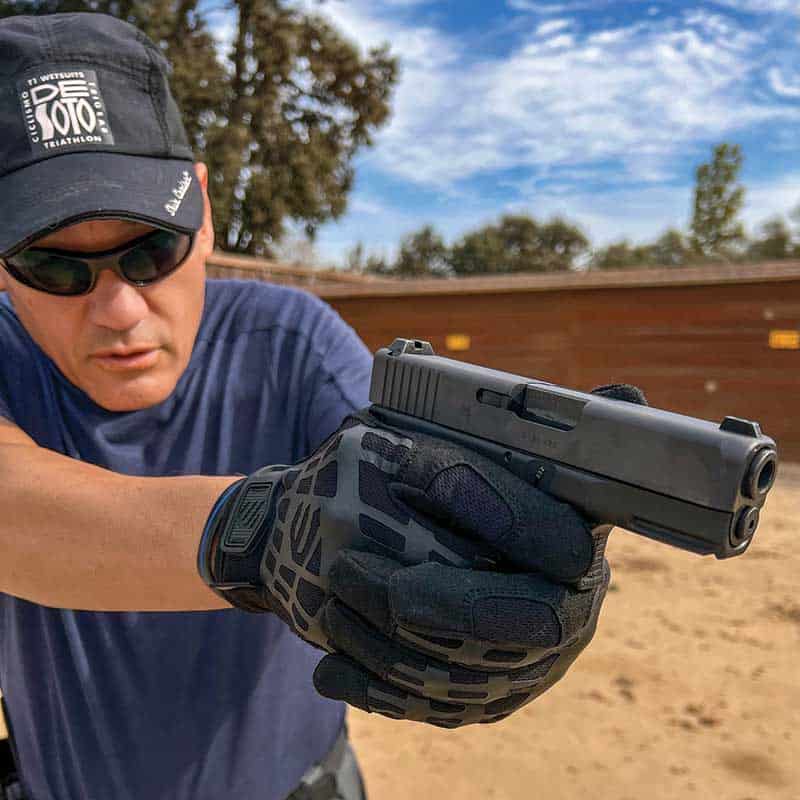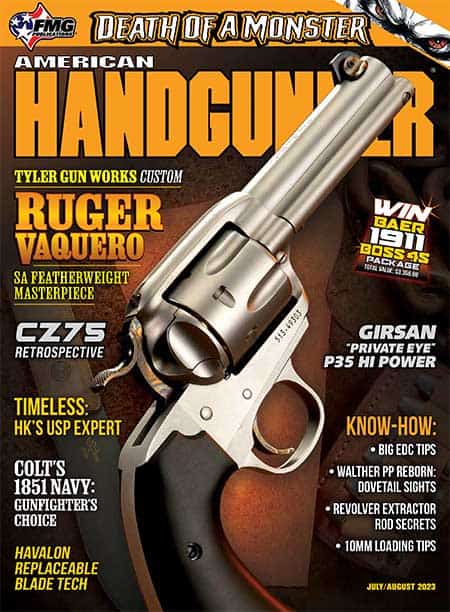10mm Loading Lessons
I find that people who reload the 10mm tend to be goal-setters. Of all the reloading hobbyists I know, 10mm reloaders seek a particular performance level. The 10mm is one of the simplest cartridges to reload and can accomplish an amazing assortment of tasks.
The mistake many reloaders make is attempting to make a 10mm into a .44 Magnum. Having said that, the 10mm is magical. Through a 3.78″ barrel, I sent 220-grain bullets downrange at 1,000 fps — just shy of 489 foot-pounds.
I like to follow three simple rules.
1. Shoot For 80%
When I shot cast bullet rifle matches, I found that the higher the load density, the more accurate the load. This rule transfers to handgun reloading — mostly. If other factors are equal, the best loads fill the cases greater than 50% and ideally around 80%. This is only a “rule of thumb,” but a good one.
Even though moderate loads can send a 200-grain hammer down range at 1,200 fps, the 10mm can be plenty accurate for defensive use. The Lyman Pistol and Revolver Handbook says Winchester 231 frequently provides the best accuracy. I have found that’s true with lighter jacketed loads. With the Nosler ASP bullets I used, 3N37 and Accurate #9 worked the best.
Vihtavuori’s reloading tables have several loads for the X-Treme 220-grain bullet. The best performers use 3N37. Their loads ranged from 6.2 to 7.3 grains, but it seemed most consistent at 6.6 grains, which is just over 80% full. I used a light taper crimp with an overall cartridge length of 1.259″. This load was moderate and hovered in the mid-900 fps range. I had a surplus of these bullets, and my test GLOCK 29SF fed them flawlessly. As I tried to lower this velocity, there was a diminishing return on performance.
The 3N37 seemed to own the sweet spot for 10mm, as it was the workhorse for the Nosler 10mm 180-grain ASP bullets too. Nosler has published load data that runs from 7.1 to 8.1 grains of 3N37. This is about 70% to 90% load density by volume.
2. The Case Trimmer Is Your Friend
Trim your cases to 0.987″. I am particular about trimming 10mm cases square, giving guns a good “shelf” for headspacing. I don’t necessarily trim for every loading, but I spot-check case length often. I do not use an inside or outside chamfer for this cartridge. It usually works best with a squared-off mouth.
It does not take much of a case flare to seat jacketed bullets into a 10mm case. The same goes for crimping. Use a taper crimp that barely “kisses” the bullet into the case. There is always enough bearing surface on 10mm bullets for light crimping, even the light ones.
Never, ever roll crimp 10mm cases. This is generally the rule for any semi-automatic cartridge whose headspace is set on the case mouth. With this cartridge, bad reloading is a hard lesson.
Pay particular attention to case OAL. If the load data tells you the OAL is 1.250″, like most of the published jacketed loads, load to precisely this length.
3. Practice Modesty
I rarely use full power loads for the 10mm. Most published loads max out at 30,000 CUP. This is not necessarily a linear relationship, but this means many loads send 200-grain bullets around 1,200 fps, close to the lower end of .44 magnum loads. The 10mm loads rarely require magnum primers. None of the loads listed here use them.
When I reload 10mm, I generally find the best performance is in the middle of the published load data. For example, for the 200-grain Nosler ASP bullet, AA#9 data runs from 11.4 to 12.4 grains. It seemed to like 11.9 grains best, which, in the stubby GLOCK I used for testing, ran about 1,025 fps.
The same goes for light loads. No matter what I did, I could not get any kind of satisfactory performance from 155- and 165-grain bullets, jacketed or cast. I could push 165-grain Berry’s with up to 12.6 grains of AA#9, but the chronograph reading was all over the place. When I moved up to 180–220 grains, everything was smooth sailing. I bought a 500-round box of the plated X-Treme Bullets 220-grain RNFP bullets and backed them up with 6.6 grains of 3N37. They recorded an average just shy of 1,000 fps. This load burned cleanly and I plinked all day with it. For those of you looking for a round that gives high penetration, these bullets never once stopped in ballistic gelatin, even after several blocks.
The 10mm can deliver incredible performance in a concealable handgun. It is one of the most satisfying cartridges to reload, especially for goal-setters.







